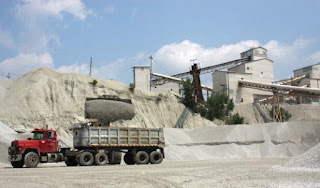The most common dust control techniques at mineral processing plants utilize local exhaust ventilation systems (LEVs). These systems capture dust generated by various processes such as crushing, milling, screening, drying, bagging, and loading, and then transport this dust via ductwork to a dust collection filtering device. By capturing the dust at the source, it is prevented from becoming liberated into the processing plant and contaminating the breathing atmosphere of the workers.
LEV systems use a negative pressure exhaust ventilation technique to capture the dust before it escapes from the processing operation. Effective systems typically incorporate a capture device (enclosure, hood, chute, etc.) designed to maximize the collection potential.
As part of a dust collection system, LEVs possess a number of advantages:
- the ability to capture and eliminate very fine particles that are difficult to control using wet suppression techniques;
- the option of reintroducing the material captured back into the production process or discarding the material so that it is not a detriment later in the process; and
- consistent performance in cold weather conditions because of not being greatly impacted by low temperatures, as are wet suppression systems.
In most cases, dust is generated in obvious ways. Anytime an operation is transporting, refining, or processing a dry material, there is a great likelihood that dust will be generated. It also follows that once the dust is liberated into the plant environment, it produces a dust cloud that may threaten worker health. In addition, high dust levels can impede visibility and thus directly affect the safety of workers.
The five areas that typically produce dust that must be controlled are as follows:
- The transfer points of conveying systems, where material falls while being transferred to another piece of equipment. Examples include the discharge of one belt conveyor to another belt conveyor, storage bin, or bucket elevator.
- Specific processes such as crushing, drying, screening, mixing, blending, bag unloading, and truck or railcar loading.
- Operations involving the displacement of air such as bag filling, palletizing, or pneumatic filling of silos.
- Outdoor areas where potential dust sources are uncontrolled, such as core and blast hole drilling.
- Outdoor areas such as haul roads, stockpiles, and miscellaneous unpaved areas where potential dust-generating material is disturbed by various mining-related activities and high-wind events.
Dust control systems involve multiple engineering decisions, including the efficient use of available space, the length of duct runs, the ease of returning collected dust to the process, the necessary electrical requirements, and the selection of optimal filter and control equipment. Further, key decisions must be made about whether a centralized system or multiple systems are best for the circumstances. Critical engineering decisions involve defining the problem, selecting the best equipment for each job, and designing the best dust collection system for the particular needs of an operation.
For more information on dust control systems, contact Process Systems Design by visiting http://processsystemsdesign.com or calling (410) 861-6437.


